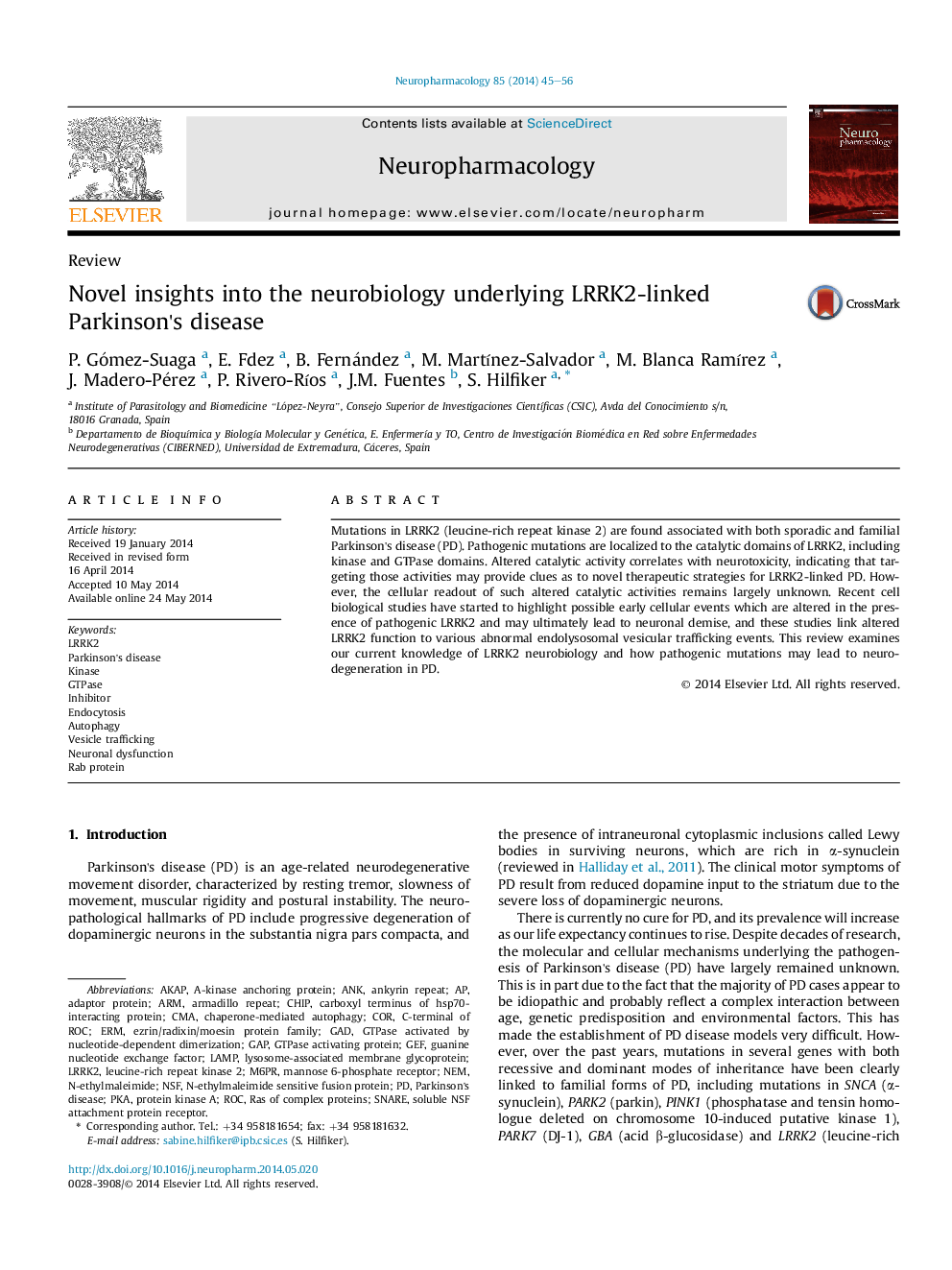| Article ID | Journal | Published Year | Pages | File Type |
|---|---|---|---|---|
| 5814376 | Neuropharmacology | 2014 | 12 Pages |
â¢LRRK2 dysfunction is involved in Parkinson's disease.â¢We review literature regarding LRRK2 catalytic activities and protein interactors.â¢We compare current molecular paradigms for the cellular roles of LRRK2.â¢We propose an integrated model which may account for cellular LRRK2 function.â¢Further studies will challenge our model and provide novel insights into LRRK2-linked Parkinson's disease.
Mutations in LRRK2 (leucine-rich repeat kinase 2) are found associated with both sporadic and familial Parkinson's disease (PD). Pathogenic mutations are localized to the catalytic domains of LRRK2, including kinase and GTPase domains. Altered catalytic activity correlates with neurotoxicity, indicating that targeting those activities may provide clues as to novel therapeutic strategies for LRRK2-linked PD. However, the cellular readout of such altered catalytic activities remains largely unknown. Recent cell biological studies have started to highlight possible early cellular events which are altered in the presence of pathogenic LRRK2 and may ultimately lead to neuronal demise, and these studies link altered LRRK2 function to various abnormal endolysosomal vesicular trafficking events. This review examines our current knowledge of LRRK2 neurobiology and how pathogenic mutations may lead to neurodegeneration in PD.
